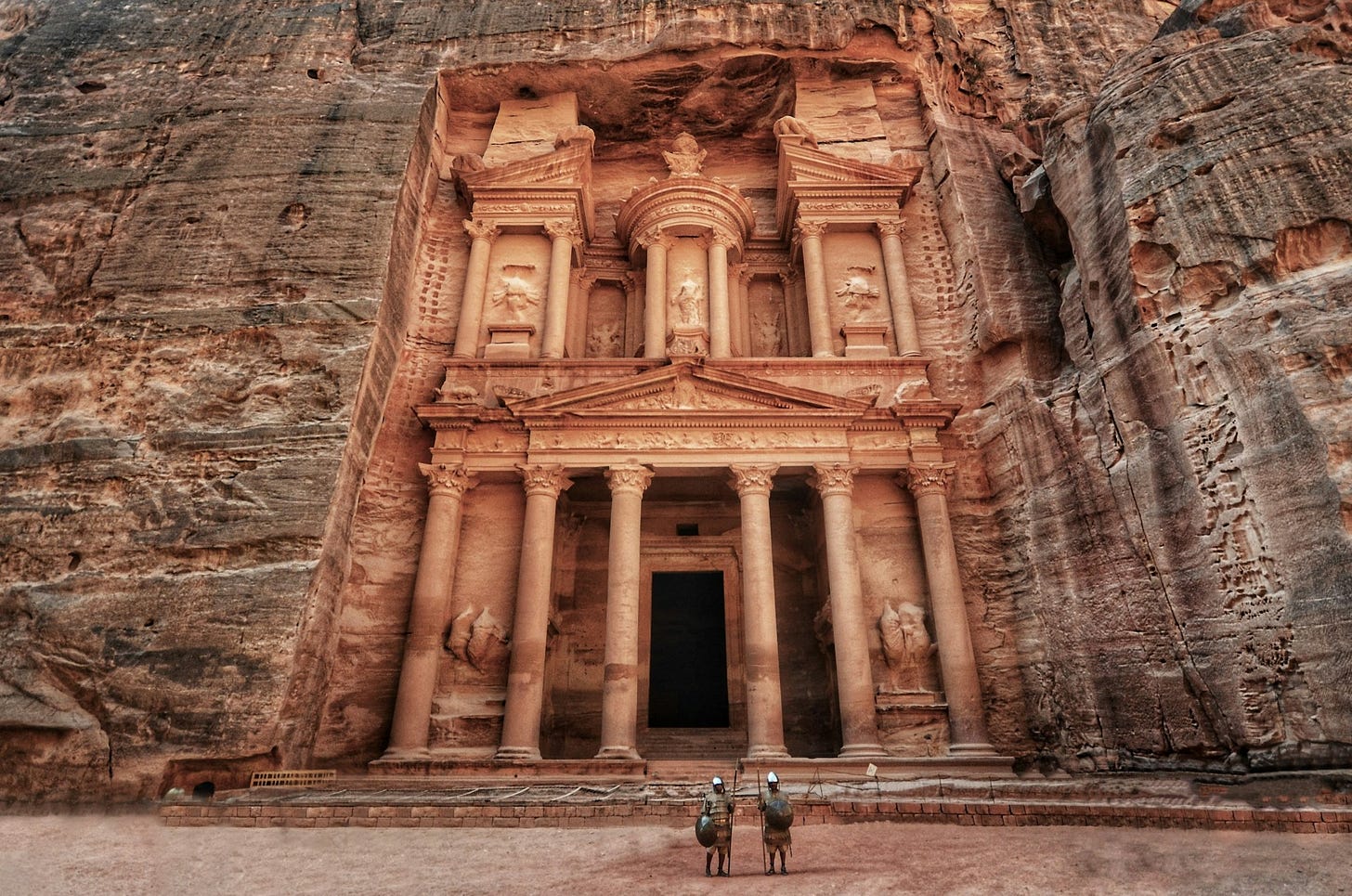Unveiling the Mysteries of Petra: Jordan's Enigmatic Lost City
A journey into the past of Petra, Jordan!
Nestled amidst the rugged red-rock landscape of southern Jordan, the lost city of Petra stands as a testament to the ingenuity and architectural prowess of the ancient Nabateans. This UNESCO World Heritage Site, often referred to as the "Rose City" due to the color of the stone from which it is carved, has captivated the imagination of explorers, historians, and travelers for centuries. Let's embark on a journey to unravel the mysteries that shroud this remarkable archaeological wonder.
Historical Background
Petra's history dates back to the 6th century BCE when the Nabateans, a nomadic Arab tribe, established it as their capital. The city flourished as a vital crossroads for trade routes linking Arabia, Egypt, and the Mediterranean. Thanks to their mastery of water conservation and intricate engineering, the Nabateans transformed the arid desert into a thriving city with elaborate structures and a complex network of channels to control water flow.
Architectural Marvels
The crown jewel of Petra is undoubtedly the Al-Khazneh, or "The Treasury," an awe-inspiring facade carved into the rose-red cliffs. This iconic structure served as a mausoleum for Nabatean kings and is adorned with intricate carvings and columns. As you wander through the narrow, winding Siq, the main entrance to Petra, you'll encounter a series of tombs, temples, and theaters that showcase the architectural brilliance of the Nabateans.
The Monastery, another masterpiece carved into the mountainside, awaits those willing to venture beyond the well-trodden paths. This colossal structure, resembling The Treasury but on a grander scale, rewards visitors with breathtaking panoramic views of the surrounding desert.
The Decline and Rediscovery
Petra's golden age came to an end with the decline of the Nabatean civilization and the shift of trade routes. The city gradually fell into obscurity and was abandoned, fading from the pages of history. It wasn't until 1812, when Swiss explorer Johann Ludwig Burckhardt rediscovered Petra, that the world once again marveled at its splendor.
Modern Preservation and Tourism
Today, Petra is a UNESCO World Heritage Site and one of the New Seven Wonders of the World, drawing tourists from around the globe. Efforts are ongoing to preserve and protect the fragile rock-cut structures, with initiatives aimed at balancing the needs of tourism with the conservation of this ancient city.
The lost city of Petra is a testament to human innovation and resilience, showcasing the indomitable spirit of the Nabateans who carved a thriving metropolis into the heart of the Jordanian desert. As visitors explore its ancient ruins, they not only witness a magnificent archaeological site but also become part of a narrative that spans millennia, connecting the modern world with the enigmatic past of this rose-red wonder.





